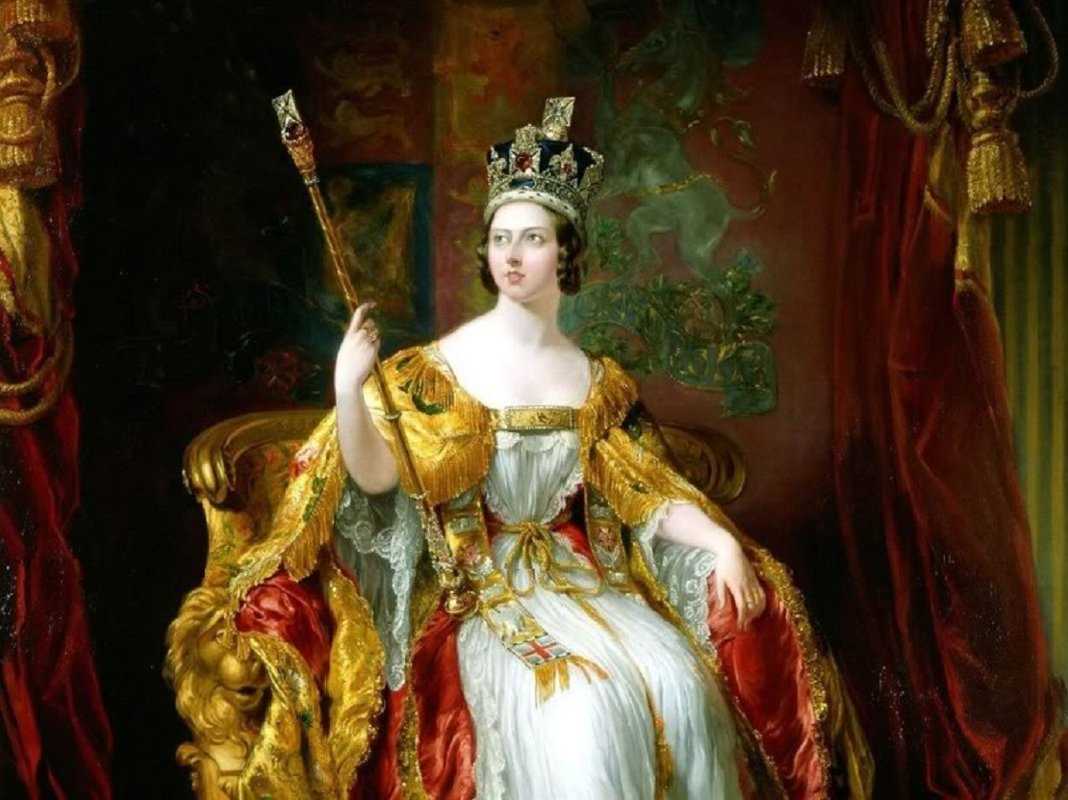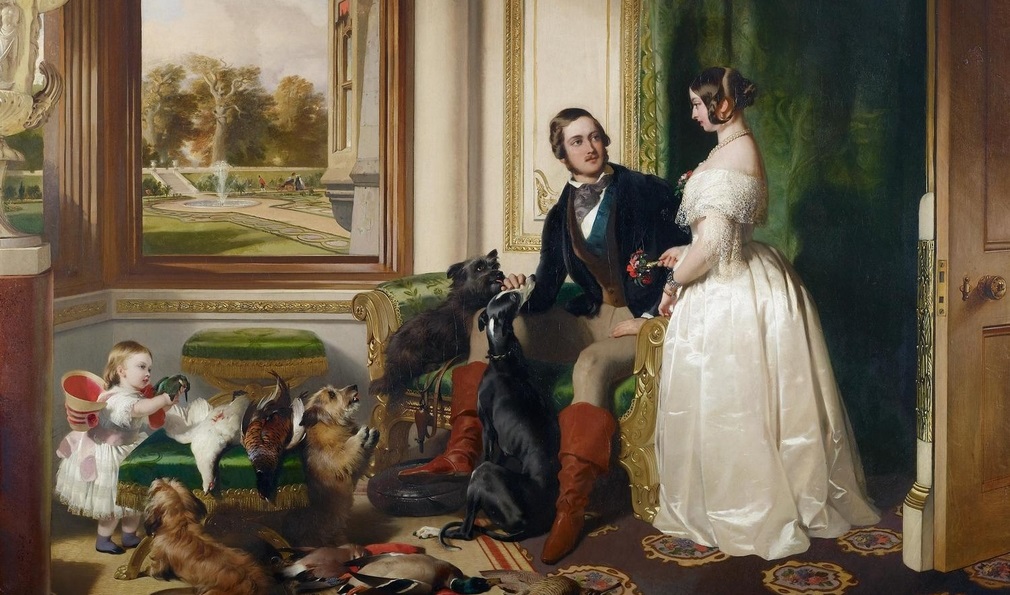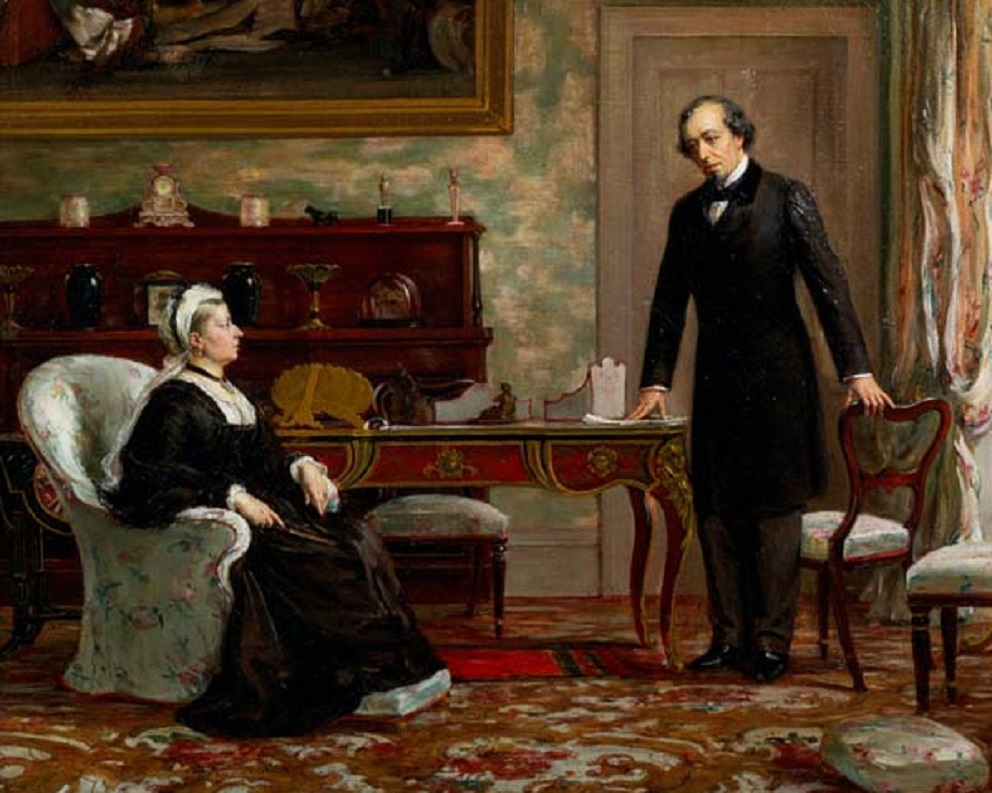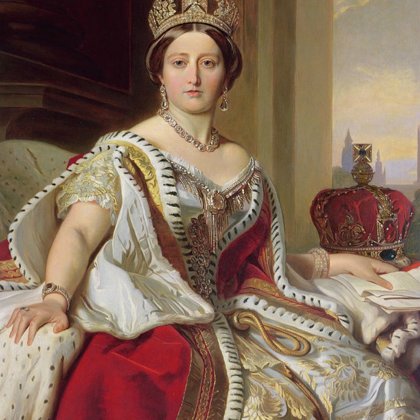QUEEN VICTORIA OF ENGLAND (1837 - 1901) WAS QUEEN OF GREAT BRITAIN AND IRELAND AND EMPRESS OF INDIA ( 1876 - 1901 ).HER ALMOST 64 YEAR REIGN FOR THE EXPERTS.
 Queen Victoria after whom Queensland is named was one of the United Kingdom's most popular monarchs. Her reign lasted from 1837 to 1901, a period hence known as the Victorian era. It was a time of major social, economic and technological progress around the world, with the Industrial Revolution driving changes across almost every aspect of daily life.
Queen Victoria after whom Queensland is named was one of the United Kingdom's most popular monarchs. Her reign lasted from 1837 to 1901, a period hence known as the Victorian era. It was a time of major social, economic and technological progress around the world, with the Industrial Revolution driving changes across almost every aspect of daily life.

 The marriage of Queen Victoria and Prince Albert, on 10th February 1840, the wedding in February, the first marriage of a reigning English Queen since Bloody Mary almost 300 years before, was held at the Chapel Royal at St James’s Palace, London, England.The ceremony took place in St George’s Chapel, Windsor. Here it is recorded as from the altar, looking down towards the screen, with the sun streaming in on the Garter banners and stalls on the north side of the choir. The silver-gilt Lily Font is being used for the ceremony instead of the usual Baptismal Font.
The marriage of Queen Victoria and Prince Albert, on 10th February 1840, the wedding in February, the first marriage of a reigning English Queen since Bloody Mary almost 300 years before, was held at the Chapel Royal at St James’s Palace, London, England.The ceremony took place in St George’s Chapel, Windsor. Here it is recorded as from the altar, looking down towards the screen, with the sun streaming in on the Garter banners and stalls on the north side of the choir. The silver-gilt Lily Font is being used for the ceremony instead of the usual Baptismal Font.
Queen Victoria was queen of the United Kingdom of Great Britain and Ireland from 1837 to 1901 the second longest reign of any other British monarch in history.Alexandrina Victoria was born to the Duchess of Kent. Her father was the fourth son of George III and she was fifth in line to the throne.However, she had three elderly uncles ahead of her in the succession. So when her father died when she was eight months her prospects of becoming queen were good. The princess, known as Victoria, was raised at Kensington Palace. She was educated by her governess Baroness Lehzen, who taught her languages, arithmetic, drawing and music. Her widowed mother was lonely and depended utterly on John Conroy a servant of her former husband who was bent on power.Queen Victoria, the only child of Edward, the duke of Kent and King George III's fourth son, and Victoria Saxe-Saalfield-Coburg, sister of Leopold, king of the Belgians, was queen of Great Britain for 63 years. To date, she is the the second longest reigning British monarch after Queen Elizabeth II. Victoria's reign saw great cultural expansion; advances in industry, science, and communications; and the building of railways and the London Underground.In 1840, she married her cousin, Prince Albert of Saxe-Coburg and Gotha. At first, the British public didn’t warm up to the German prince and he was excluded from holding any official political position. At times their marriage was tempestuous, a clash of wills between two extremely strong personalities. However, the couple were intensely devoted to each other and shared a strong enough affection to have nine children.Victoria was devastated and went into a 25-year seclusion. Albert took an active interest in the arts, science, trade and industry; the project for which he is best remembered was the Great Exhibition of 1851, the profits from which helped to establish the South Kensington museums complex in London.Victoria and her husband, Prince Albert, raised their extensive royal family within the traditions of classic British monarchical traditions. The nine children were: Eight of their children went on to marry into other royal families. The nine children were:Victoria Adelaide Mary Louise was the oldest of the children. She was born on November 21, 1840 and died on August 5, 1901. Being the eldest daughter, she was giving the title Princess Royal in 1841. This title is given as a gift of the monarchy. She married German emperor Frederick (Fritz) William of Prussia in 1858 and was given the additional title of Empress of Germany.Albert Edward, the first-born son, was born on November 9, 1841. At birth he was given the titles of Duke of Cornwell and Duke of Rothesay. A month after his birth, he was given the title of Prince of Wales. In 1863, he married Princess Alexandra of Denmark. During his engagement, he had a scandalous affair with Nellie Clifden, an actress, bringing disgrace to the royal family. He was also said to have many affairs throughout his marriage. When Queen Victoria died in 1901, he became King Edward VII and reigned until his death on May 6, 1910. His reign was called the Edwardian period. King Edward was known as a peacemaker and was a popular ruler who brought strength to the country. Alice Maud Mary was born on April 25, 1843 and died on December 14, 1878, aged just 35. She married Prince Louis of Hesse-Darmstadt in 1862. Upon marriage, Alice became the Grand Duchess of Hesse-Darmstadt. Alice was a great champion of women's causes and nursing as a career for women. She managed field hospitals and publicized her beliefs, earning many supporters for the movement.Alfred Ernest Albert was born on August 6, 1844 and died on July 30, 1900. He was given the titles of Duke of Edinburgh and Duke of Saxe-Coburg-Gotha. In 1874, he married the Grand Duchess of Russia, Princess Marie. Alfred was the first royal to visit Australia.Helena Augusta Victoria was born on May 25, 1846 and died on June 9, 1923. She married a German prince, Christian of Schleswig-Holstein. The couple stayed in England close to Helena’s parents. Helena worked as her mother’s secretary for many years, and became something of the family figurehead, staying active in various royal events and engagements. She was one of the founders of the Red Cross and, like her sisters, supported the women's nursing movement.Louise Caroline Alberta was born on March 18, 1848 and died on December 3, 1939. After marrying John Campbell, Marquess of Lorne in 1871, she was given the title of Dowager Duchess of Argyll. Her husband went on to be the Governor General of Canada. Louise was a skilled artist and like her older sisters was a supporter of women's rights. She spent years moving between Canada and Britain, working as the vice-regal consort to her husband. After her husband died, she spent the last years of her life living at Kensington Palace.Arthur William Patrick Albert was born on May 1, 1850 and died on January 16, 1942. From early on, he had a strong interest in the military. He joined the army in 1866 and in 1874 was named Duke of Connaught and Strathearn. He married Princess Louise of Prussia. Arthur served as Governor General of Canada from 1911 to 1916. He was the Canadian Commander-in-Chief’s representative in World War I. He devoted his life to performing royal and military duties.Leopold George Duncan Albert was born on April 7, 1853 and died at the young age of 31 on March 28, 1884 due to hemophilia. He studied at Oxford University and was a champion of education and the arts in Britain. He was known as the Duke of Albany and married Princess Helen of Waldeck-Pyrmont.Beatrice Mary Victoria Feodore, the youngest child of Victoria and Albert, was born on April 14, 1857. She died on October 26, 1944. Beatrice spent her childhood as a companion to her widowed mother. Victoria intended for Beatrice to remain unmarried and stay with her, but eventually Beatrice was given consent to marry Prince Henry of Battenberg in 1885. Upon marriage, she was given the title of Princess Beatrice of Battenberg. The couple lived with Victoria for the next 10 years, at which point Henry died, followed closely by Victoria. Beatrice spent the remainder of her life editing her mother’s journals and making public appearances on behalf of the royal family.

 Many of Victoria's children became monarchs, princes and princesses of other countries.Eight of their children went on to marry into other royal families. Queen Victoria was always very interested in India, although she never went there. Queen Victoria enjoyed dancing, sketching, horse riding and singing; she was given lessons as a child by the famous opera singer Luigi LaBlache. She liked to paint and could play the piano. She kept a regular diary throughout her life.
Many of Victoria's children became monarchs, princes and princesses of other countries.Eight of their children went on to marry into other royal families. Queen Victoria was always very interested in India, although she never went there. Queen Victoria enjoyed dancing, sketching, horse riding and singing; she was given lessons as a child by the famous opera singer Luigi LaBlache. She liked to paint and could play the piano. She kept a regular diary throughout her life.
In 1826, the Duchy of Saxe-Coburg-Saalfeld was reorganised to become that of Saxe-Coburg and Gotha. Its first duke was Ernest I whose family had ruled the previous duchy. In 1831, Ernest’s younger brother became Leopold I of Belgium after he was offered the position by the Belgian National Congress, who had recently declared independence from Holland. This was the first outward move of the house and established a line that still exists in Belgium today though the current King, Philippe I. Ernest’s nephew went on to marry Queen Maria II of Portugal and their descendants ruled Portugal until it was made a republic in 1910.But the connections of this house did not stop there. In 1840, Ernest’s second son, Albert, married Queen Victoria of Britain. It was not the start of such relations, however, as the two were first cousins. Victoria’s father, Prince Edward, the fourth son of King George III, had married Princess Victoria of Saxe-Coburg-Saalfeld, who was Ernest’s sister.Through the marriage of Queen Victoria and Prince Albert, the British monarchy became part of the House of Saxe-Coburg, and this remained so until it was changed to Windsor during the First World War due to anti-German sentiment.It was through this marriage that the web of relations evolved further, as the nine children of Victoria and Albert married into noble families across the continent, earningVictoria the nickname “Grandmother of Europe”. Their eldest daughter, Victoria, married Frederick, crown Prince of Germany and Prussia who later ruled both kingdoms. Their son became Wilhelm II, and ruled Germany until the monarchy was abolished in 1918.The heir to the English throne and later King Edward VII married Princess Alexandra of Denmark, a controversial choice because of the German connections in Edward’s family who were in a state of tension with Denmark. Victoria’s second daughter, Alice, married Louis IV, grand Duke of Hesse and their daughter eventually became Alexandra, Empress of Russia, through her marriage to Tsar Nicholas II. Certainly Queen Victoria’s nickname rings true.Another house that established itself through various monarchies across Europe was the House of Bourbon. Although it had older roots, this house began its royal connection in 1268 with a marriage into the French monarchy, the result of which established the son as Duke of Bourbon. Through marriage they came to rule the Kingdom of Navarre and eventually founded the Bourbon dynasty in France when Henry IV became king.The Bourbons went on to establish themselves in Spain when, just before the War of the Spanish Succession in 1700, the Spanish king, Charles II, left the throne to his grand-nephew, Philip of Bourbon who became Philip V. This founded a dynasty which still exists today through Felipe VI.The Bourbons also moved into Italy. Philip V married the niece of the Duke of Parma and their eldest son, Charles, inherited this small, independent kingdom. He later went on to become King of Naples, furthering their Italian titles.It was through this connection that a later descendant of Charles, Prince Felix, married, in 1919, Grand Duchess Charlotte of Luxembourg, who was also his first cousin. Their son eventually became Jean, Grand Duke of Luxembourg and, in turn, his son is Duke of Luxembourg today, as well as first cousin to King Philippe of Belgium. It is with this connection that the journey across the relations of European monarchs is brought full circle.It was through links like these that George V went to war with his cousin, Wilhelm II in 1914. Though the connections established here barely scratch the surface of the web of relations that existed and continue to do so throughout Europe, it is interesting to note how united these nations are through their past and present rulers. Despite the wars and disputes between them, they were, and are very much, one big family.In 1861, Victoria’s mother, the Duchess of Kent died. The two had been estranged since the time of Victoria’s ascension. Her mother’s death greatly affected Victoria and she went into a great depression cause by her intense grief. Unable to function, Prince Albert took over most of her duties despite the fact that he was ill with chronic stomach pains. Then, when their son Bertie, the Prince of Wales, became involved in a scandalous relationship with an actress and Prince Albert traveled to Cambridge to confront his son. Prince Albert had extremely high moral standards and felt his son’s behavior was unacceptable and advised Bertie to remember his royal responsibilities. When Prince Albert returned from his trip he became very ill and was diagnosed with typhoid fever and died shortly after on December 14, 1861. Queen Victoria was devastated by the death of her beloved husband and felt that Prince Albert’s intense worry over Bertie’s scandalous behavior brought on her husband’s illness and hastened his death.With the death of Prince Albert, Queen Victoria went into deep mourning and withdrew from her royal duties too distraught to function. She immediately cancelled all the royal court calendar events and after a period of official mourning never worn anything but black clothing, her widow’s veil and a small diamond crown. Because of the way she dressed after Prince Albert’s death, Queen Victoria was called the “Widow of Windsor”. She left London and remained isolated in her other royal residences and divided her time between Windsor Castle, Osborne House and Balmoral Castle in Scotland. It was at Balmoral Castle that Queen Victoria came to increasingly rely on her personal servant named John Brown. There have been rumors of a romantic relationship between them and even a possible secret marriage. Despite these scandalous rumors, John Brown has been credited for coxing Queen Victoria out of her deep mourning and severe depression, causing her to return to her royal duties and a public life.
In the remaining years of Queen Victoria’s life and reign as monarch, she eventually returned to a public life after her self-imposed isolation and eventually regained her popularity with the English people as their beloved matriarchal Queen. In 1887, she celebrated 50 years on the throne with a lavish Golden Jubilee that was celebrated throughout England. Then, in 1896, Queen Victoria became the longest reigned monarch in British history and she requested that any special celebration be postponed to coincide with her Diamond Jubilee.Intensely virtuous, at the age of 11 upon learning she was next in succession to the British crown, she reacted by promising "I will be good, " a promise which she faithfully kept. With innate good manners and a great love of truth, she was also immensely selfish, keeping aged ministers and ladies-in-waiting out in all weathers and up to all hours, and ruining the life and character of her eldest son (later Edward VII) by refusing to allow him any responsibility. Her prudery was famous, yet her letters reveal her completely unafraid to face unpleasant facts, even about her nearest and dearest. Tremendously personal and partisan in her handling of her ministers, she never succeeded in understanding the English party system; she considered that her own view of what would best benefit her country gave her the right to oppose any policy and person, and she frankly preferred coalitions, while accepting that the Crown must be above party. Living all her adult life subject to the guidance of wise men, she remained both innocent and devious, arbitrary and simple, courageous and timid, "unconstitutional in action while constitutional by temperament." In fact she was so completely an expression of the dominant views and characteristics of her time that she truly embodied and interpreted her people throughout her reign. As queen, she saw slavery abolished in the colonies, the Reform Bill passed, the Poor Law reformed, the Corn Laws repealed; she saw her country undertake successful wars in the Crimea, Egypt, the Sudan, and South Africa, acquire the Suez Canal, and establish constitutions in Australia and Canada.Alexandrina Victoria was born in Kensington Palace, London, on May 24, 1819. She was the only child of Edward, Duke of Kent (1767-1820; fourth son of George III), by Mary Louis Victoria (1786-1861; fourth daughter of Francis Frederick Anthony, reigning Duke of Saxe-Coburg-Gotha, and widow of Edward, Prince of Leiningen). Victoria was baptized on June 24, 1819, Alexander I of Russia being one of her sponsors, and her uncle, the prince regent (later George IV), the other. She grew up under her mother's care and that of Louisa Lehzen, her German governess, and spoke only German until she was 3. From 1832 Victoria's mother took her on extended tours through England. On May 24, 1837, she came of age, and on June 20, on the death of her uncle William IV, she succeeded to the throne, receiving the news of her accession in a cotton dressing gown at 6 A.M. Her chief advisers at first were the prime minister, Lord Melbourne, a Whig (Liberal), and Baron Stockmar, a German sent to London by her uncle King Leopold of the Belgians as adviser to his 18-year-old niece.Queen Victoria had large blue eyes, a cupid-bow mouth, smooth light-brown hair that darkened with age, and a receding chin. She was under 5 feet and as a girl was slender, then plump. By the time she was 26 she was stout and remained so, except after periods of illness, until the end. She had a silvery voice, enunciated excellently, without a trace of the German accent of her eldest son, and had a radiant, though rare, smile. Those she disliked, William Gladstone for example, found her somber and terrifying; her ladies, servants, and grandchildren thought she looked "so dear" and idolized her.Victoria's hand was kissed on her accession by members of her council, which included the Duke of Wellington, Sir Robert Peel, Lord John Russell, and Lord Palmerston, with all of whom she was to be closely associated. In October her two first cousins, Ernest and Albert Edward (1819-1861) of Saxe-Coburg-Gotha, came to London. Albert had written in his diary at 11, "I intend to train myself to be a good and useful man." Victoria fell in love with him instantly and proposed to him; they were married on Feb. 10, 1840. It was an ideally happy marriage and restored the prestige of the Crown, which had sadly deteriorated during the reigns of Victoria's three inept predecessors. Prince Albert was granted £30, 000 annual income by Parliament, was named regent in the event of the Queen's death in childbirth, and in 1857 was made Prince Consort by Victoria. Albert described his functions to the Duke of Wellington in April 1850 as: "the husband of the Queen, the tutor of the Royal children, the private secretary of the sovereign and her permanent Minister."In June 1842 Victoria made her first railway journey from Slough, the station nearest Windsor Castle, to Paddington, and in that same year she first went to Scotland, traveling by sea. In 1843 Victoria and Albert visited King Louis Philippe. She was the first English monarch to land in France since Henry VIII visited Francis I in 1520. King Louis Philippe's return visit was the first voluntary visit to England of any French ruler. In 1845 Victoria, with Albert, made the first of many trips to Germany, staying at Albert's birthplace, Rosenau.In 1834, after Lord John Russell had failed to form a ministry (principally owing to Victoria's opposition to Palmerston as foreign minister), Lord John "handed back the poisoned chalice, " as Disraeli put it, to Peel. But Peel's ministry fell on a measure for Irish coercion, and by 1847 the Irish famine, in which 1½ million people died and 1 million emigrated, postponed Victoria's planned visit there, which did not take place until 1849, when she landed at Cove, changing its name to Queenstown. In 1846 Victoria tangled with Palmerston over the marriage of the Spanish queen Isabella, and in 1850 she informed him that he should inform her of the course of action he proposes, a should not arbitrarily modify or alter a measure once it had received her sanction." Lord Palmerston "affected pained surprise" at these injunctions but did not alter his ways. In 1851 the Whig government was outvoted and Lord John resigned, but as Lord Derby, the Conservative (Tory) leader refused to form a government, Victoria again sent for Lord John Russell. She was at this time so happy and blessed in her homelife that she wrote, "Politics (provided my Country is safe) must take only 2nd place." In 1844 she had Osborne Palace built for her on the Isle of Wight and in 1848 Balmoral Castle in Scotland; thereafter until the end of her life she spent part of each spring and fall in these residences. In 1851 she and Prince Albert were much occupied with the Great Exhibition, held in London, the first of its kind.
 In Victoria's reign, the years between 1867 and 1885 are most known for two great, contending prime ministers the Conservative Benjamin Disraeli, and the Liberal William Gladstone. Victoria's relationship with the former was very good; the latter she disliked immensely. On the whole she favored Disraeli's conservative politics and his imperialist views in foreign policy. She detested Gladstone's democratic sensibilities as well as his personality.
In Victoria's reign, the years between 1867 and 1885 are most known for two great, contending prime ministers the Conservative Benjamin Disraeli, and the Liberal William Gladstone. Victoria's relationship with the former was very good; the latter she disliked immensely. On the whole she favored Disraeli's conservative politics and his imperialist views in foreign policy. She detested Gladstone's democratic sensibilities as well as his personality.
